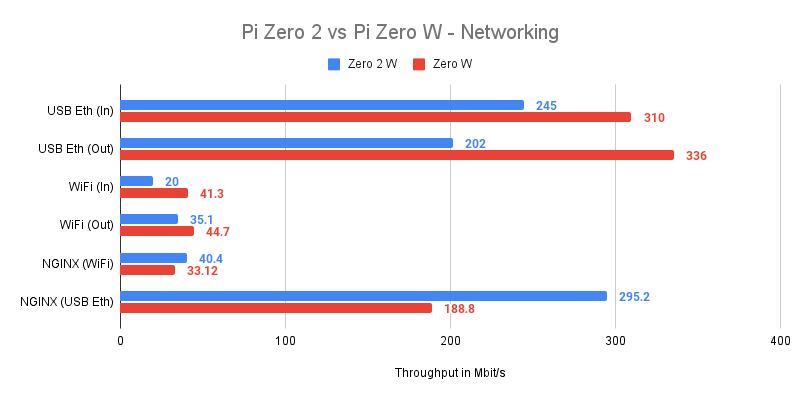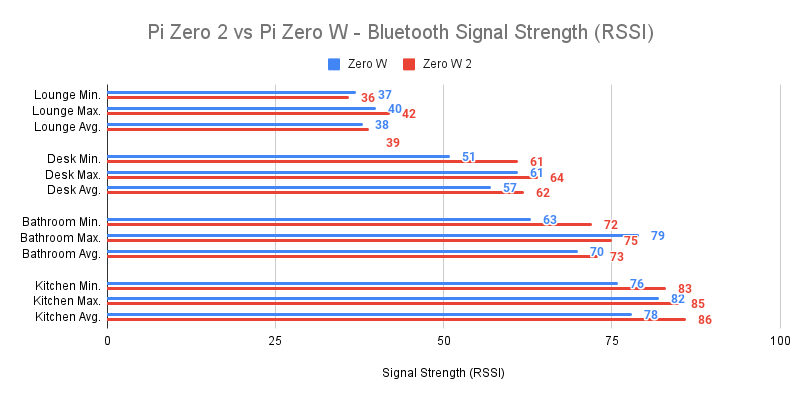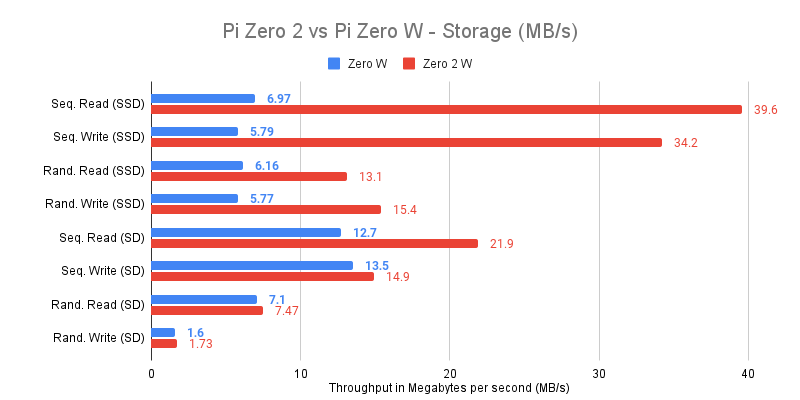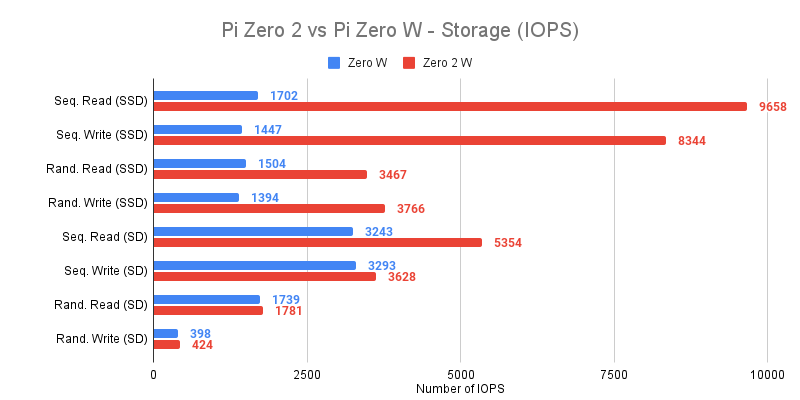Are you, like me, curious to know how the new Raspberry Pi Zero 2 W stacks up against its predecessor, the Raspberry Pi Zero W? If you missed the initial launch information and specifications, check out my initial information post on the new SBC which explains a little more about the “new” RP3A0-AU chip in use on the Raspberry Pi Zero 2 W.
I’ve utilised a number of off-the-shelf benchmark suites that most of you will be familiar with, along with some more bespoke/particular tests. This should give us a good idea of what the overall experience will be and hopefully, we’ll answer any questions you have!
Table of Contents
Raspberry Pi Zero W Benchmarks
Each test was performed on both devices using 32bit Raspbian/Raspberry Pi OS GNU/Linux 11 (bullseye) kernel 5.10.63 with all system settings (CPU frequency etc) at their stock values. I pointed a 120mm fan at the devices to prevent thermal throttling in any tests.
UnixBench (5.1.3)
Note: This test required zram to be configured to complete successfully.

Geekbench (2.4.2-LinuxARM)
Geekbench’s 5.4.x Linux ARM preview build, unfortunately, doesn’t run on the original Zero W, so I’ve pulled out version 2.4.2-LinuxARM from the archives so we can at least make some kind of comparison using the popular tool.

Networking (WiFi & USB Gbit Ethernet)
For the USB Ethernet, I’ve used a Linksys 1Gbit USB Ethernet device connected via an OTG adapter to the 2 devices. with WiFi being the onboard chip. I’ve also tested the usual iPerf3 but in addition to that, I tested serving a 1GB file via NGINX from tmpfs, just to add another data-set from a piece of software many of you may choose to use.

Bluetooth
There’s a slight bump in the Bluetooth version between the 2 devices, with the Zero 2 W utilising Bluetooth 4.2, and the Zero W, Bluetooth 4.1. We also see the introduction of a metal RF shield over the WiFi/Bluetooth chip on the Zero 2 which may be playing a part here, as we see some better results with the Zero W in the data. Overall, however, the Zero 2 W is much more stable when it comes to signal levels.
I have 4 Xiaomi LYWSD03MMC temperature/humidity sensors (flashed with custom firmware) here. and I obtained 25 readings from each sensor:
- Lounge (~30cm with line of sight)
- Desk (~4m with line of sight)
- Bathroom (~6m, through 1 tiled wall)
- Kitchen (~11m, through 1 tiled and 1 plasterboard wall).
There are 30+ devices in range of my test area so there is a lot of nearby “noise”, meaning this test should hopefully provide a somewhat real-world example of how people will be using these. Each device was tested 1 at a time (so they weren’t on next to each other) but directly after one another in the same position and I pulled readings from all 4 sensors using this tool. All 4 were successfully read, confirming that there was an actual, usable signal,

Storage (microSD + USB SSD)
I tested both devices with a SanDisk Extreme Pro 64 GB A2 SD card for microSD card tests. For the SSD results, I chose the Samsung EVO 840 250GB SSD attached via a USB/SATA adapter. This also went through a USB OTG adapter into the Pi’s micro-USB port which runs at USB 2.0 speeds and the results are close to the limit of the USB bus when overheads etc are taken into account. Do I expect many people to hook up SSDs to their Pi Zero? Probably not, but at least you know it’s not a terrible experience..
The microSD card results pleasantly surprised me though. The Zero 2 W with a decent microSD card has shown to be an extremely capable combination!


Power Draw
I’m using a USB-C device that provides volt/amp readings, plugged into Apple MacBook USB-C wall-plug to provide the juice. A fresh install of Raspberry Pi OS Lite was loaded up and both models readings were taken after being allowed to sit for 10 minutes at idle, and 10 minutes under full CPU load using stress-ng --cpu 4 for the Zero 2 and stress-ng --cpu 1 for the Zero W. I pointed a 120mm fan at the devices whilst testing to prevent any thermal throttling and voltage changes.

Conclusion
After spending the last week testing these Pis and I’ve come to appreciate just how far we’ve come. For around £25 you can get an incredibly capable little computer. With a decent microSD card, it will tackle a whole host of projects. Emulation with RetroPie? Getting to grips with Python? There’s a lot you can do and I’d love to hear what you end up doing with yours.. If you have any ideas, or requests for additional benchmarks or tests, please leave me a comment!. I also try and keep a list of benchmarks on Github so maybe I’ve already posted yours there.
Much love.
5 comments
A very constructive Reddit thread came out of this post! If you’re interested in reading other people’s thoughts, check it out at https://www.reddit.com/r/raspberry_pi/comments/rdlrv4/first_piece_of_content_like_this_feedback/
I use it plugged into the USB port (for the IPOD !) of my Marantz NR1607 amp for power (I was surprised that it works -it must be 5V/2A so) and connected via HDMI. I put it in a MCUZONE box which integrates 3 USB2s and 1 RJ45 (1Go).
– myMPD replacing volumio and moode
– ownCloud
– domoticz
– MPD
– samba/nfs
– kodi for music
it’s works at 55 degrees without fans replacing a zero pi.
Ooh, very nice! It’s nice to see people actually using those boards for proper reasons, I feel bad that I just test them and banish them to a box hah
Hi,
Are you sure the legend for networking throughout graph is correct? It says pi zero has better performance than zero 2.
Could you please double check?
BR.
Hi! I know it seems weird but this was actually the case. I believe the new shielding over the WiFi chip was improving reliability but at the cost of speed!